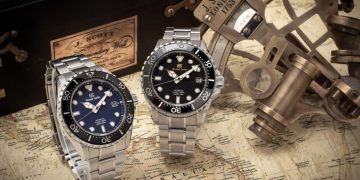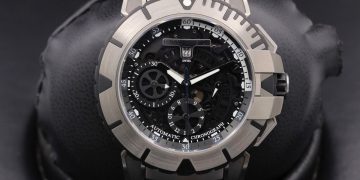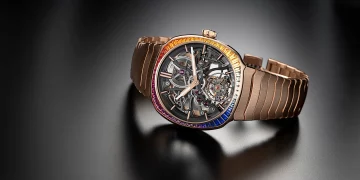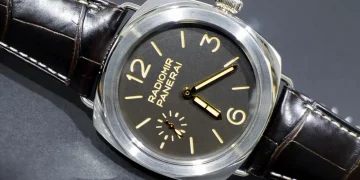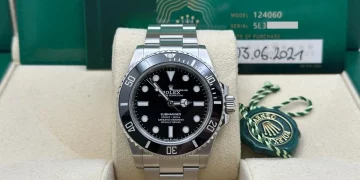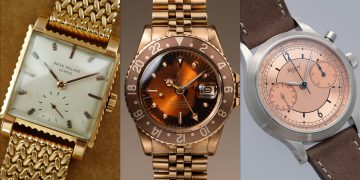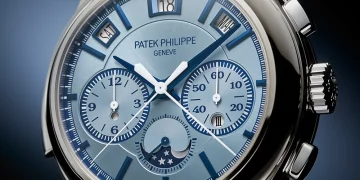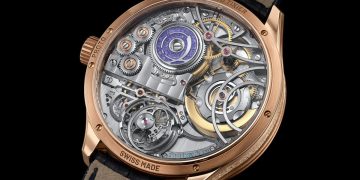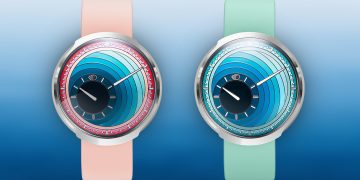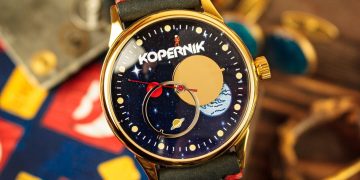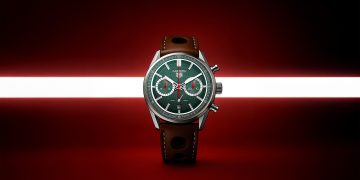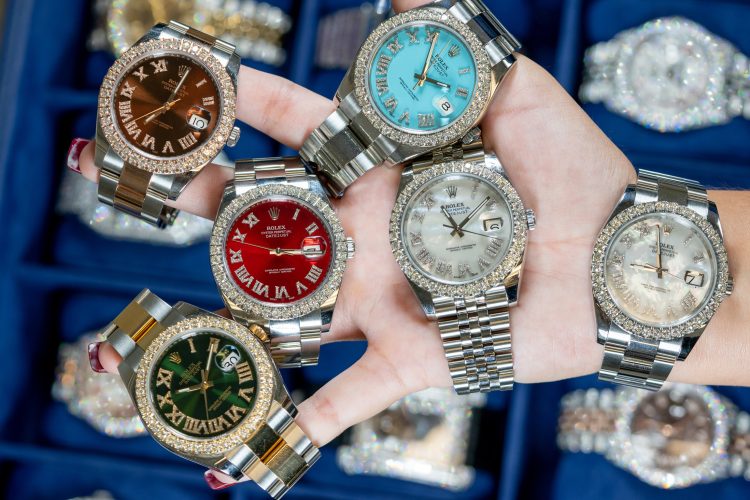Introduction: Watches as Symbols of Power and Prestige
In the world of pop culture, few items have managed to carry as much weight, significance, and prestige as the humble watch. What once began as a practical device for timekeeping has evolved into a highly coveted status symbol, with some timepieces now selling for millions of dollars. Watches are no longer merely functional; they have become a reflection of personal identity, a statement of success, and a visible sign of belonging to the upper echelons of society.
From Hollywood movies to hip-hop lyrics, watches have managed to carve out a prominent place in the conversation about wealth, power, and personal image. Whether displayed in a James Bond movie or worn by a top celebrity at a red carpet event, watches are more than just accessories; they’re shorthand for luxury, style, and influence. This article explores the complex relationship between watches and pop culture, diving into how and why these timepieces have come to symbolize so much more than just the passage of time.
The Evolution of Watches in Pop Culture: From Practical Tool to Iconic Status Symbol
Early Days: Watches in Hollywood and Beyond
The story of watches as status symbols in pop culture begins in the early days of cinema. The 1920s and 1930s marked the golden age of Hollywood, where iconic stars like Cary Grant and Humphrey Bogart were often seen sporting luxurious timepieces on screen. These early portrayals helped shape the idea that a well-crafted watch could convey more than just wealth—it could define sophistication, class, and taste.
However, it wasn’t until the rise of celebrity culture in the mid-20th century that watches truly started to gain prominence as status symbols. The likes of James Dean, Steve McQueen, and Paul Newman were not only actors but style icons whose choices of timepieces became famous in their own right. McQueen’s association with the Tag Heuer Monaco, for instance, became legendary, adding a layer of exclusivity and cool factor to the watch, further cementing the idea that watches were not just functional but a reflection of personal identity.
Watches in Music: A Symbol of Success and Swagger
In the world of music, particularly in hip-hop, watches have taken on an even more amplified role. The genre, known for its emphasis on wealth, success, and luxury, has made the watch a central component of the aesthetic of success. Artists like Jay-Z, Kanye West, and Drake are often seen wearing some of the most expensive and exclusive timepieces, from Rolex to Patek Philippe, further associating the watch with the idea of having “made it.”
For many hip-hop artists, a watch is not just a tool to tell time but a statement of their success story—a symbol of having risen from humble beginnings to the top of the music industry. The larger the watch, the more diamonds it has, the more ostentatious the brand, the more it signifies power and wealth. In this culture, wearing a watch is not just about telling time; it’s about telling a story of self-made fortune and bravado.
One of the most iconic moments in the intersection of hip-hop and watch culture came when Jay-Z released his album “Watch the Throne” in collaboration with Kanye West. The title itself was a nod to the symbolic power of watches in their own right, reinforcing the idea that timepieces were not just accessories, but symbols of the elite. Watches, in this context, are about more than personal time management; they are part of the cultural conversation surrounding what it means to be successful and powerful.
The Role of Watches in Red Carpet Culture
While hip-hop brought the watch into the spotlight of street culture, the watch’s presence in Hollywood red carpet events has helped maintain its association with glamour, elegance, and class. A-list celebrities and high society figures frequently wear haute horlogerie—the finest, most meticulously crafted timepieces—on the red carpet. The watches they choose to wear often carry a level of prestige that extends far beyond what’s on their wrist.
A key example of the red carpet’s embrace of watches as symbols of status is Roger Federer, who is known not only for his tennis accomplishments but also for his longstanding partnership with Rolex. Wearing a Rolex is about more than just telling time; it’s about aligning oneself with a legacy of excellence, precision, and luxury. Watches like the Patek Philippe Nautilus or Audemars Piguet Royal Oak are often worn at the world’s most glamorous events, representing more than just timepieces but rather a carefully curated image of success and prestige.
For these celebrities, the watch they choose to wear often defines their personal brand, much like their clothing, choice of car, or the partners they keep. The act of wearing a luxury watch has evolved into a key part of maintaining an aura of exclusivity. The watch is, in essence, an extension of self-image, a visual cue to the public about who they are, what they stand for, and the level of success they have achieved.
Watches as Symbols of Power: How Timepieces Convey Influence and Authority
The Psychological Impact of Watches
The psychological effect of wearing a luxury watch cannot be understated. Studies have shown that wearing expensive watches can boost an individual’s confidence and sense of self-worth. For both celebrities and business moguls, these watches are often seen as tools of influence, allowing them to maintain an image of authority and control. This is particularly true for high-profile businessmen and politicians, whose carefully chosen timepieces underscore their leadership status and influence.
For example, Barack Obama’s choice to wear a Tag Heuer while in office was a quiet statement of restraint and humility amidst the trappings of political power. In contrast, the choice of a diamond-encrusted Rolex or a Richard Mille by some of today’s top moguls sends a message of unapologetic wealth, authority, and exclusivity. These watches function not just as tools for telling time but as instruments of image management.

The Impact of Watches on Personal Branding
In today’s social media-driven world, watches have become central to personal branding. Celebrities, influencers, and business leaders know that every public appearance is an opportunity to enhance their personal image. Watches are a key part of that equation, allowing individuals to visually communicate their values, wealth, and social standing without saying a word.
The emergence of Instagram as a platform for curated personal branding has further emphasized the importance of luxury accessories. Watches—often showcased in carefully styled photos—serve as status symbols in the same way that a luxury car or an exclusive vacation destination might. The watch is a constant visual reminder to the audience of an individual’s success and style. Through hashtags, posts, and stories, celebrities and influencers create a digital narrative around their luxury watch choices, reinforcing their status and aspirational value.
The Role of Watches in Defining Personal Image: A Reflection of Identity
Watches as an Extension of Personality
In many cases, the watches people choose to wear are not just about their social standing but also an extension of their personal identity. For example, Apple Watches are often associated with a more modern, tech-savvy audience, while Patek Philippe timepieces evoke a sense of heritage, tradition, and old-world craftsmanship. In a sense, the watch becomes a reflection of who someone is—whether they are a cutting-edge tech innovator, a classic watch enthusiast, or someone who values exclusivity above all else.
Many entrepreneurs and innovators wear simple, functional watches to reflect their no-nonsense approach to business. In contrast, celebrities and influencers in the fashion world might favor bold, statement-making watches as a way to communicate their fashion-forward sensibilities. Watches, therefore, help define how people are perceived by others and how they see themselves in the world.
Watches as a Form of Legacy
For some individuals, watches carry a deeper meaning—one that goes beyond the present moment. Luxury watches like the Rolex Submariner or Omega Speedmaster often have rich histories and associations that connect the wearer to past generations or notable events. These watches can become heirlooms, passed down through families, representing a legacy of success and continuity. They are not just symbols of wealth but also of heritage.
This enduring appeal of watches is part of their power as status symbols—they represent not just the now but also the future, as timepieces often become family treasures. The history and legacy of a watch become inseparable from the identity of its owner, further cementing the connection between watches and personal image.
Conclusion: Watches as Icons of Status and Identity
Watches have evolved into more than just tools for telling time—they are now iconic symbols of status, power, and personal identity. From the glitzy world of celebrity culture to the bold statements made in music and fashion, watches continue to represent far more than their mechanical function. In pop culture, a watch is a visual cue—a way to communicate success, wealth, and personal style without saying a word.
The symbolism attached to luxury watches is a multifaceted blend of history, individuality, and prestige. In an era where image is everything, watches have become key elements in crafting personal narratives and maintaining cultural relevance. Ultimately, whether worn by a Hollywood star or a tech mogul, the watch serves as a timeless symbol of luxury, prestige, and the power of personal branding.


